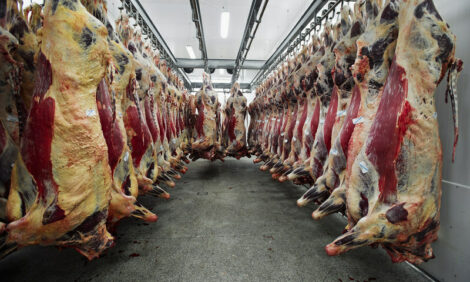



Report Concludes Dairy Security Act in Farm Bill Best for Farmers
US - A new analysis issued by the Congressional Research Service (CRS) points out the advantages of the margin insurance and market stabilization-based approach to reforming dairy policy, according to the National Milk Producers Federation (NMPF), which urged members of Congress to review the report and act on the Farm Bill yet in 2012.The CRS report was released last week in order to help members of Congress and their staffs better understand the details of current dairy policy, and potential changes to those programs. More importantly, the CRS report provides an impartial view of the specific programs contained in the Dairy Security Act of the pending Farm Bill.
NMPF President and CEO Jerry Kozak said that the CRS report “should greatly clarify and simplify the decision-making process on Capitol Hill. It dispels the scare-mongering distortions offered by opponents of the Dairy Security Act, highlights the benefits of a new, voluntary approach to providing a safety net to farmers, and reinforces the need to include the Dairy Security Act in a new farm bill.”
Mr Kozak said that even though the House has failed to act on the farm bill in September, the CRS report should expedite the process of considering the bill after the November elections in a lame duck session of Congress.
Under the Dairy Security Act, those farmers who voluntarily elect to receive support through the margin protection program will be subject to the Dairy Market Stabilization Program (DMSP), which sends signals to participants to reduce their production when margins are severely compressed. The CRS analysis clarifies the function of the DSMP by stating (p. 17) that “Although the DMSP is referred to as a supply management program, it is perhaps more accurately described as a production disincentive program [emphasis added], since there are no production limits or quotas, and the dairy operator may continue to run his operation at any production level.” CRS reported that the resulting milk production reductions, along with greater demand stimulated by USDA purchases of dairy products using funds collected by the DMSP, “is expected to result in a high future farm price for milk.”
CRS also flagged (p. 20) a key provision: that the DMSP ends either when margins improve, and/or when US prices for cheddar cheese and nonfat dry milk exceed world prices by a certain percentage, thus preventing a loss of export markets and a surge of imports.
The CRS report also reviewed a competing approach to providing margin insurance: the Goodlatte-Scott House amendment, which offers a weaker insurance program that does not contain a market stabilization element. CRS noted (p. 22) that with the Goodlatte-Scott approach, “no production growth is permitted,” and insurance coverage is limited to only 80 per cent of a farm’s production – compared to 90 per cent under the Dairy Security Act.
The CRS report points out (p. 10) that the margin insurance program creates “a timely and transparent measure of a dairy production margin that will be useful across all dairy production regions.” The margin’s feed costs are calculated comparing the national all-milk price with national average costs for corn, soybean meal and alfalfa hay.
In reviewing other empirical studies of the provisions of the Dairy Security Act, CRS highlighted (p. 23-24) several major improvements compared to current programmes:
- The combination of the margin insurance and market stabilization programs “appears to substantially mitigate the dairy operating margin volatility.”
- The Dairy Security Act “will provide a stronger safety net in extremely low margin events.”
- An analysis by agricultural economist Mark Stephenson found that net milk exports actually expand under the Dairy Security Act.
The congressional analysis of the Dairy Security Act also notes that the proposed Farm Bill programs are voluntary. Farmers would elect to participate in the margin protection and market stabilization programs, rather than choose private insurance that is already available.
You can view the report here.


